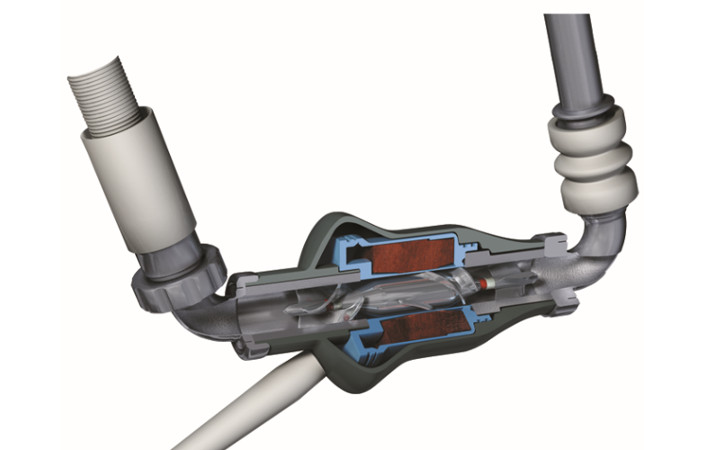Promoted Content: Enhancing Performance and Safety of Medical Implantable Devices with Multiphysics Simulation
At Abbott Laboratories, ventricle assist devices are developed to improve the lives of patients with heart failure. Numerical simulation is used throughout the design process to characterise diverse concurrent aspects of the design, from thermal effects and fluid dynamics to power transfer.
The development of a device meant to assist or completely replace functioning of the heart is undeniably complex. This design process involves immense challenges, from supplying power to the device to ensuring it does not interfere with normal biological functioning. Researchers at Abbott Laboratories use multiphysics simulation to engineer left ventricular assist devices (LVADs) in an ongoing effort to improve the outlook and quality of life for patients with heart failure.
The condition typically begins with the left side of the heart, as the left ventricle is responsible for pumping oxygen-rich blood throughout the body a greater distance than the right ventricle, which pumps blood through the lungs. Often, in patients with a poorly functioning left ventricle, an LVAD (see Figure 1) can provide mechanical circulatory support.

Figure 1. An LVAD pump is responsible for circulating oxygen-rich blood throughout the body. Image courtesy of Abbott Laboratories.
Register now to continue reading
Thanks for visiting The Engineer. You’ve now reached your monthly limit of premium content. Register for free to unlock unlimited access to all of our premium content, as well as the latest technology news, industry opinion and special reports.
Benefits of registering
-
In-depth insights and coverage of key emerging trends
-
Unrestricted access to special reports throughout the year
-
Daily technology news delivered straight to your inbox










UK Enters ‘Golden Age of Nuclear’
Anybody know why it takes from 2025 to mid 2030's to build a factory-made SMR, by RR? Ten years... has there been no demonstrator either? Do RR...